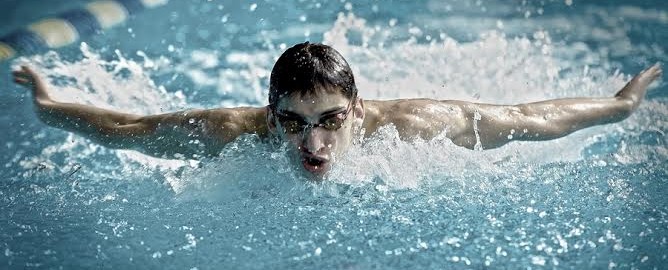Preventing Swimming Injuries
With the summer months upon us, there are bound to be more people swimming, which also increases the chance of swimming related injuries. Swimming is one of the most popular low-impact fitness activities. There is a wide range of skill between those swimming competitively and those that choose it as a recreational sport. The majority of swimming athletes practice and compete year-round. Elite swimmers sometimes train more than five miles per day, putting their joints through intense repetitive motion. Depending on the stroke used, the majority of swimming injuries affect the shoulders, knees, hips, or back. Minor injuries can cause shoulders to become unstable and lead to shoulder pain and tendinitis. Other frequent injuries include inner knee and hip issues from breaststroke kicking, as well as back injuries from dolphin kicks or dry-land cross-training.
Typically, the most common injuries are shoulder and lower body injuries. The shoulder is the one joint most commonly affected by swimming injuries and overuse. Shoulder injuries could include rotator cuff impingement, in which there is pressure on the rotator cuff from part of the scapula or shoulder blade as the arm is lifted for a stroke. Fatigue and weakness of the rotator cuff and muscles surrounding the shoulder blade can result in biceps tendinitis (painful inflammation of the bicep tendon) and shoulder instability, wherein structures that surround the shoulder joint do not work to maintain the ball within its socket. Knee injuries that involve the tendons and ligaments are also common. Swimmers who regularly do the breaststroke may also experience hip pain from inflammation of the tendons in the hip. Back problems, as well as lower back disk problems, may be increased by the dolphin kick which is often used in competitive swimming.
Correcting one’s technique may help prevent these conditions from affecting your swimming. Using good, symmetrical body rotation will help prevent shoulder injuries. Changing your stroke technique to enter the water with a flat hand, finger tip first will also benefit. Furthermore, many swimmers don’t give very much attention to their upper body posture when swimming. If you are one that has poor posture from your daily life already, it can really affect how your muscles work when you are swimming. To introduce better posture while you swim, try to consciously think about having your shoulders back and chest forward. If possible, lessen the repetitive strokes that are causing overuse injuries. Be sure to exercise your muscles regularly when out of the water to keep your muscles and ligaments strong and flexible. Always speak with a sports medicine professional or athletic trainer if you have any concerns about injuries or prevention strategies.
Hopefully you do not encounter any of these injuries and can continue to enjoy your swimming activities, whether it be for personal enjoyment or competitive swimming.





